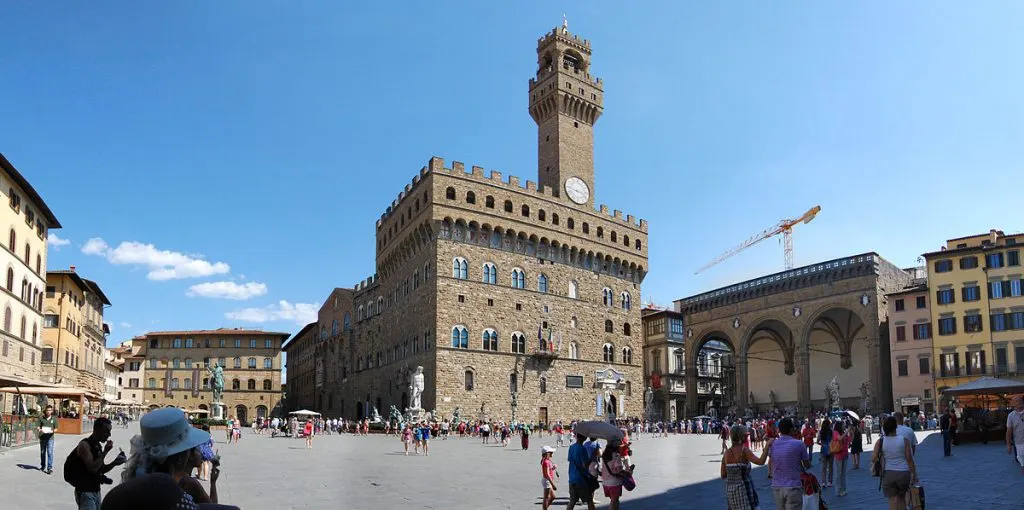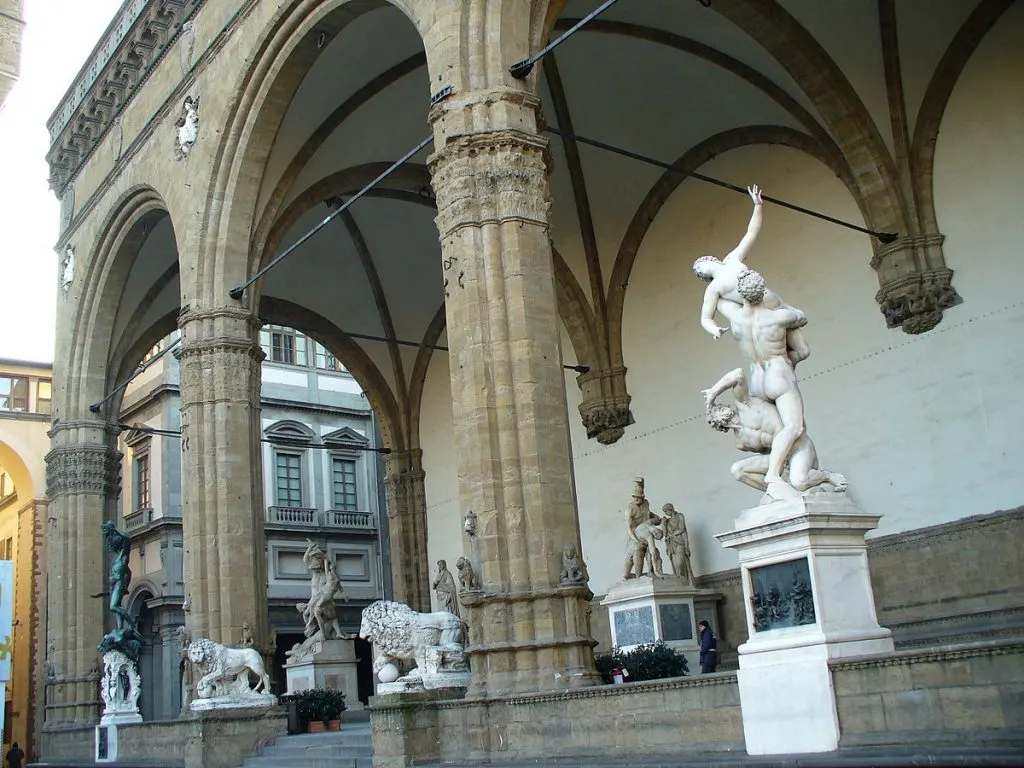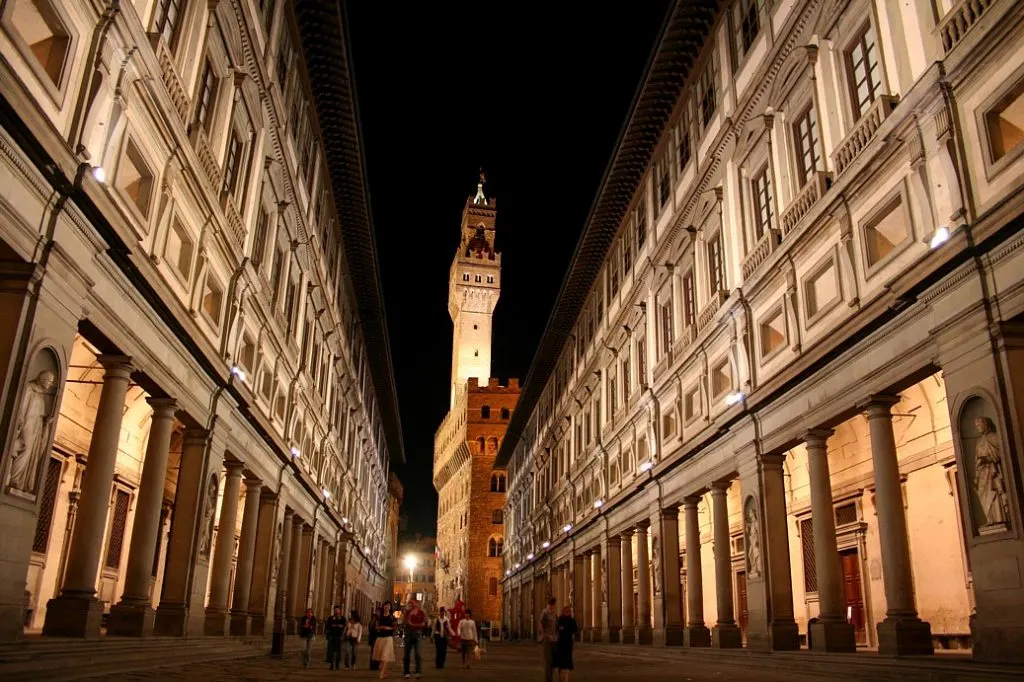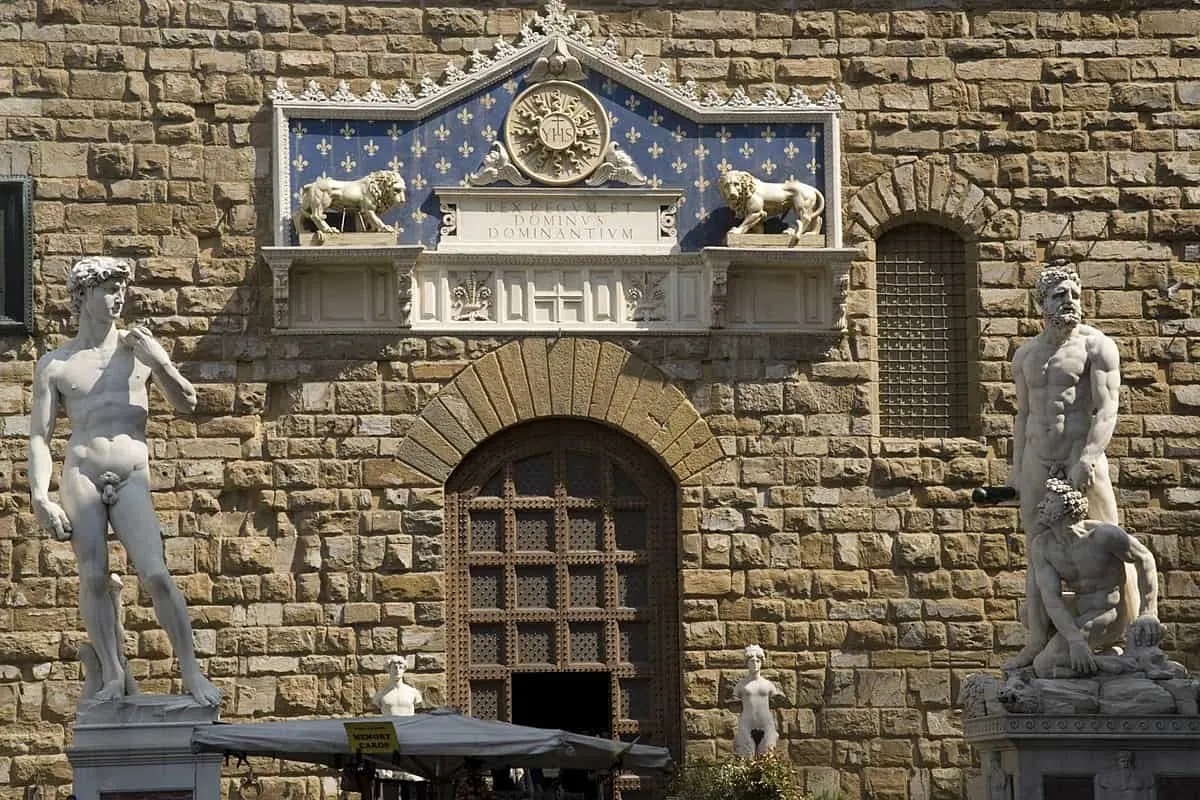One of the most fascinating squares in the world is located in the Italian city of Florence.
In this post, you’ll discover the ultimate list of interesting Piazza della Signoria facts.
1. The square is located in the heart of Florence
The Piazza della Signoria is considered to be the heart of Florence, the most populous and capital city of the Tuscany Region in Central Italy. It’s the center of the city and many of the most famous landmarks in Florence are located within its vicinity.
Some of these landmarks include Florence Cathedral, which is located just a short distance to the north of the square, and the Ponte Vecchio, the world-famous famous bridge spanning the Arno River which leads up to the Renaissance-style Palazzo Pitti.
Most of the famous sites in Florence are located within walking distance from this magnificent square!

2. It was named after the most famous building it faces
There are various palaces and historical buildings located on the square itself as well. The most prominent is the “Palazzo Vecchio” which features an easily recognizable crenelated tower.
This building is the town hall of the city and was originally referred to as the “Palazzo della Signoria,” referring to the “Signoria” or ruling body of the Republic of Florence. It was only referred to as the “Palazzo Vecchio,” which literally translates to “Old Palace,” when the Medici rulers of Florence moved to the Pitti Palace across the river in the late 16th century.
This also means that the square was named after the original name of the Palazzo Vecchio.

3. It has been the center of the city since Roman times
One of the most remarkable Piazza della Signoria facts is that the square has been the most important area of the city since Roman times, back when Florence was referred to as “Florentia.”
Remains of a Roman theater, Roman baths, and even a huge 5th-century basilica have been found in the area, meaning the square was the central point of the town back then as well.
4. The square got its current shape in the 13th century
The square is L-shaped and the development of the current layout started as early as 1268. That’s when the houses of the previous rulers of Florence called the “Ghibellines” were brought down to make way for the Palazzo Vecchio.
This doesn’t mean that the square looked the way it does today back in the 13th century though. It wasn’t until the year 1385 that it was paved for the first time and that some of the prominent buildings were completed.

5. The Loggia dei Lanzi was built in the late 14th century
One of the most remarkable buildings on the square is a gallery referred to as the “Loggia dei Lanzi. This is one of the buildings which was completed before the square was even paved as it was completed between 1376 and 1382.
It consists of 3 arches that rest on Corinthian pillars and which are open to the public. Some claim that some of the most renowned architects of the time suggested continuing the gallery all around the square, which would have been a magnificent addition indeed, but this was never materialized.
The gallery is decorated with multiple famous statues created by both contemporary artists such as Benvenuto Cellini and classical sculptures dating back to the 1st century A.D. such as the statue of Menelaus bearing the corpse of Patroclus.

6. One of the most famous museums in the world adjoins the square
With well over 4 million visitors every year, the Uffizi Gallery is without a doubt one of the most popular museums in the world. It houses some of the greatest works of the most famous Renaissance and Baroque artists.
The building itself was designed by Giorgio Vasari in the 16th century and was originally intended to house the offices of the Medici rulers of the Republic of Florence, hence the name “Uffizi” or “Offices.”
The building adjoins the Piazza della Signoria on the south side.

7. A building on the square is believed to be designed by Raphael
One of the multiple palaces and historical buildings located on the square is called the “Palazzo Uguccioni.” The building’s design is remarkable because it’s the only building in all of Florence which features columns on its façade.
Because of the originality of the design, it has been suggested that the designer was the famous Italian painter and architect Raphael. This would make the structure even more remarkable because the building was only completed in the year 1550, 30 years after Raphael passed away.

8. Some of the most famous statues in the world decorate the square
Apart from the open-air museum with sculptures called the Loggia dei Lanzi, some remarkable statues are located on the square itself. One of the most amazing Piazza della Signoria facts is that it used to be the home of perhaps the most famous statue of all time, David by Michelangelo!
It used to be located just in front of the entrance of the Palazzo Vecchio from 1504 until 1873 when it was relocated to the Galleria dell’Accademia in Florence. This means that the current statue of David is a replica of the original.
Some other notable statues on the square are:
- The Fountain of Neptune by Bartolomeo Ammannati (1575) – Also located near the Palazzo Vecchio.
- A copy of Judith and Holofernes by Donatello (1464) – The real one is located inside the Palazzo Vecchio.
- Hercules and Cacus by Bandinelli (1533) – Located on the opposite side of David.
- Equestrian Monument of Cosimo I by Giambologna (1594).

